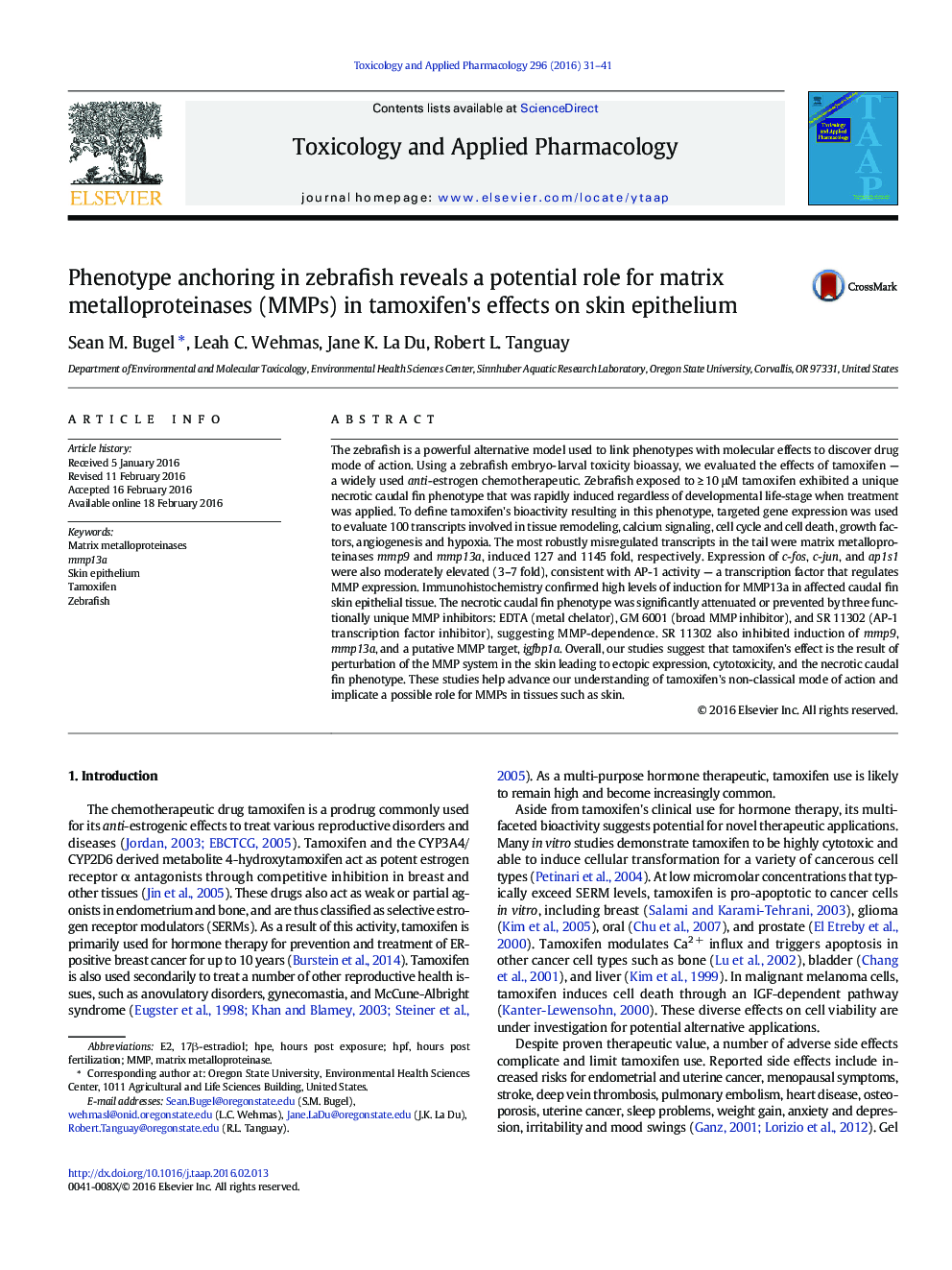| کد مقاله | کد نشریه | سال انتشار | مقاله انگلیسی | نسخه تمام متن |
|---|---|---|---|---|
| 2568188 | 1561166 | 2016 | 11 صفحه PDF | دانلود رایگان |

• Tamoxifen rapidly induced a unique necrotic caudal fin phenotype in zebrafish.
• Apoptosis co-localized temporally and spatially in the necrotic tail.
• The necrotic fin phenotype was p53, GPER and ER independent.
• The necrotic fin phenotype was dependent on ectopic MMP induction and activity in the skin.
• The necrotic fin phenotype occurred at concentrations exceeding anti-estrogenic effects.
The zebrafish is a powerful alternative model used to link phenotypes with molecular effects to discover drug mode of action. Using a zebrafish embryo-larval toxicity bioassay, we evaluated the effects of tamoxifen — a widely used anti-estrogen chemotherapeutic. Zebrafish exposed to ≥ 10 μM tamoxifen exhibited a unique necrotic caudal fin phenotype that was rapidly induced regardless of developmental life-stage when treatment was applied. To define tamoxifen's bioactivity resulting in this phenotype, targeted gene expression was used to evaluate 100 transcripts involved in tissue remodeling, calcium signaling, cell cycle and cell death, growth factors, angiogenesis and hypoxia. The most robustly misregulated transcripts in the tail were matrix metalloproteinases mmp9 and mmp13a, induced 127 and 1145 fold, respectively. Expression of c-fos, c-jun, and ap1s1 were also moderately elevated (3–7 fold), consistent with AP-1 activity — a transcription factor that regulates MMP expression. Immunohistochemistry confirmed high levels of induction for MMP13a in affected caudal fin skin epithelial tissue. The necrotic caudal fin phenotype was significantly attenuated or prevented by three functionally unique MMP inhibitors: EDTA (metal chelator), GM 6001 (broad MMP inhibitor), and SR 11302 (AP-1 transcription factor inhibitor), suggesting MMP-dependence. SR 11302 also inhibited induction of mmp9, mmp13a, and a putative MMP target, igfbp1a. Overall, our studies suggest that tamoxifen's effect is the result of perturbation of the MMP system in the skin leading to ectopic expression, cytotoxicity, and the necrotic caudal fin phenotype. These studies help advance our understanding of tamoxifen's non-classical mode of action and implicate a possible role for MMPs in tissues such as skin.
Figure optionsDownload high-quality image (338 K)Download as PowerPoint slide
Journal: Toxicology and Applied Pharmacology - Volume 296, 1 April 2016, Pages 31–41